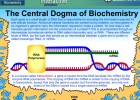Cargando...
Recursos educativos
-
Nivel educativo
-
Competencias
-
Tipología
-
Idioma
-
Tipo de medio
-
Tipo de actividad
-
Destinatarios
-
Tipo de audiencia
-
Creador
Lo más buscado
- Repaso de números
- Arte abstracto para octavo
- Guía del mundo
- Arte prerrománico
- Cultivos transgénicos
- Puzzle interactivo
- Palabras correctas e incorrectas
- Guía para crear cuentos
- Educación Ético-Cívica
- Animales terrestres
- software educativo
- Simetría axial
- Operaciones de multiplicar
- Cuentos para dormir
- Actividades educativas para niños
-

Video game: Cell Structure
Tiching explorer Organización
- 1 lo usan
- 5792 visitas
In this activity we learn to distinguish three cells: prokaryote, animal and plant. We also understand the function of the organelles in these cells. We may zoom in and see enlarged views of different…
-

Fertilisation and the development of the zygote
EduBook Organización
- 3020 visitas
This diagram shows how a fetus is formed. Firstly, a zygote is formed from the fertilisation of an ovum from a woman by a sperm from a man. The zygote then splits into more and more cells. It develops…
-

The discovery of the cell
EduBook Organización
- 2671 visitas
The discovery of the cell did not occur until after the invention of the microscope, in 1590. In 1665, the English scientist Robert Hooke published the first description of cells when he examined…
-

Neurons and nervous actions
EduBook Organización
- 2658 visitas
Neurons The nervous system consists of special cells called neurons (or nerve cells). Each neuron has many short nerve extensions, called dendrites. One of the extensions is longer than the others. This…
-

Video: The Central Dogma of Biochemistry
Tiching explorer Organización
- 6281 visitas
The key theme of all of biochemistry is that biological molecules are responsible for the storage and transmission of inherited information, provide the structure with which cells and organisms are…
-

Animal reproduction
EduBook Organización
- 14362 visitas
Reproduction is the only vital function that is not needed to keep an individual alive. It ensures the continuation of the species. Although sexual reproduction is a universal characteristic of animals,…
-

Tutorial Excel 2010
Tiching explorer Organización
- 31 lo usan
- 6049 visitas
This set of lessons covers the basics of Excel: modifying cells, rows and columns, creating formulas, sorting and filtering data, reviewing and sharing workbooks charts, sparklines, etc... There are…
-

Introduction
EduBook Organización
- 7574 visitas
1. From biomolecules to organisms The molecules that make up living things, biomolecules, join together to form large molecules called macromolecules. The next level of complexity is the cell, which is…
-

The simplest invertebrates
EduBook Organización
- 5404 visitas
The most common invertebrates are sponges, cnidarians, flatworms, nematodes, annelids, molluscs, echinoderms and arthropods. 1.1. Poriferans or sponges Sponges are aquatic animals. They act as filters…
-

Introduction - Animal reproduction
EduBook Organización
- 1 lo usan
- 4821 visitas
Reproduction is the only vital function that is not needed to keep an individual alive. It ensures the continuation of the species. Although sexual reproduction is a universal characteristic of animals,…
Te estamos redirigiendo a la ficha del libro...













